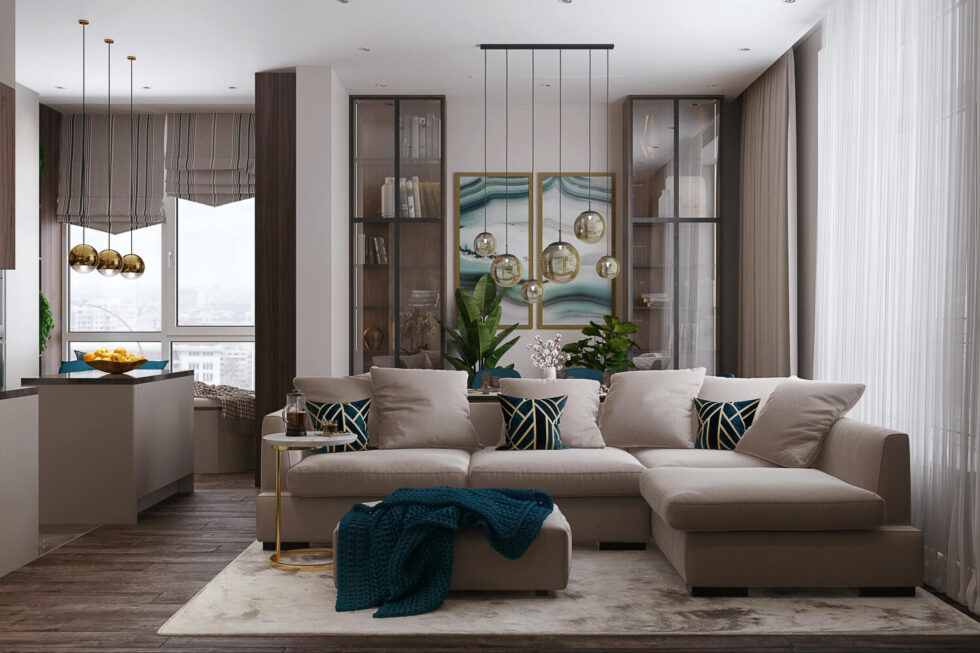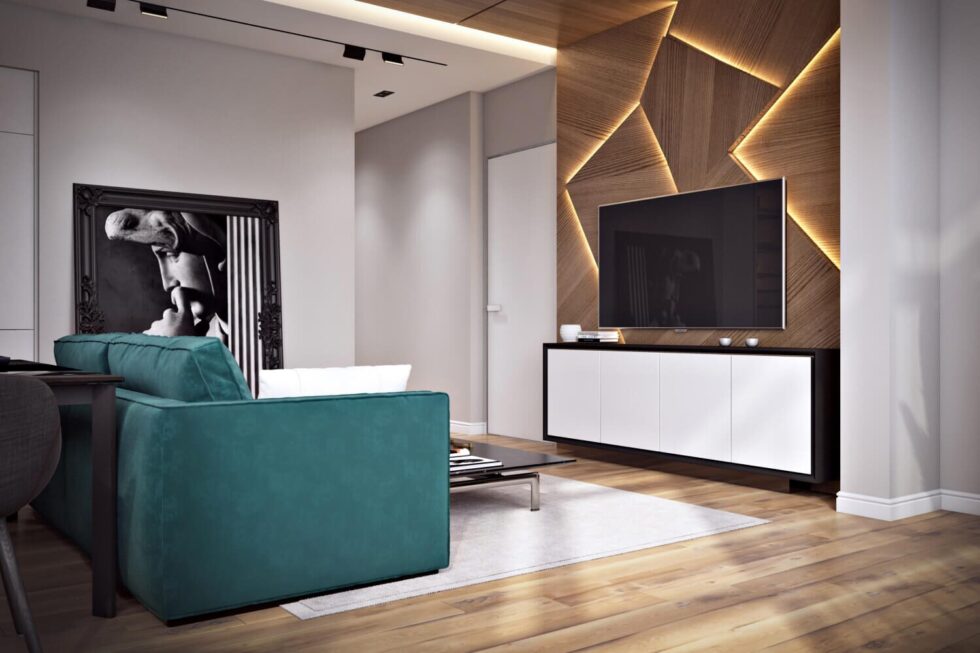Focusing on Textures: How to Play with Surfaces to Create a Stylish Interior

In the world of interior design, textures are not only aesthetic elements but also powerful tools for creating an emotional atmosphere in a room. From glossy to matte surfaces, the right choice of textures can transform the entire look of a space, making it more dynamic, stylish, and cozy. Different textures allow you to change not only the appearance of a room but also its feel, atmosphere, and even functionality. It's important to combine different textures correctly to highlight key elements of the interior. In this article, we will explore how various textures affect design and how to effectively play with surfaces to achieve harmony in a space. For more interesting articles, visit G.business.
Why Textures Are Important in Interior Design
Textures are not just part of the design; they are also an essential tool for creating atmospheric changes in a room. They can add depth and space, draw attention to certain details, or, conversely, hide flaws. Each texture plays a role in changing the emotional tone of the space: glossy surfaces create a lighter, fresher look, while matte surfaces make a room feel more intimate and cozy. Different surfaces can add striking accents and create contrasts that highlight the style and character of the interior. By correctly using textures, you can maintain balance in a room, making it not only aesthetically appealing but also comfortable for living. Let’s explore how you can combine different textures to create a stylish interior.

Wall Textures: Choosing Between Glossy and Matte
Wall surfaces have a significant impact on the look and atmosphere of your interior. The right choice of texture for walls can dramatically change the mood of a room. Glossy walls reflect more light and visually expand the space, which can be ideal for small rooms. Matte walls, on the other hand, create a sense of greater depth and warmth, and also hide imperfections. Glossy surfaces are great for modern interiors, where clean lines and minimalism are essential. Matte textures are better suited for rooms where it’s important to create a calm and cozy atmosphere. Let’s take a closer look at the advantages and disadvantages of each type of wall texture.
Comparing Glossy and Matte Walls
After considering the difference between glossy and matte walls, you can choose the ideal option depending on your needs and the interior style.
| Texture Type | Advantages | Disadvantages |
|---|---|---|
| Glossy | Reflects light, makes space look larger | Highlights surface imperfections |
| Matte | Creates depth, hides flaws | Absorbs light, may appear darker |
The choice between glossy and matte walls depends on the room's size and desired ambiance. Glossy surfaces are best for spacious, modern rooms, while matte surfaces add warmth to more intimate spaces like bedrooms or living rooms.
How to Use Textures on Furniture
Furniture can be the centerpiece of an interior, so it’s important to consider the texture of materials when selecting furniture. The right choice of textures on furniture can enhance the room’s style and add atmosphere. For example, leather creates an elegant look and is perfect for minimalist interiors. Fabric, on the other hand, adds more warmth and comfort. However, each material has its own characteristics. Let’s compare the two most popular options: leather and fabric.
Furniture Textures: Leather or Fabric
Each material on furniture has its advantages and disadvantages, which depends on the style you want to create in the room. The choice between leather and fabric is important not only for aesthetics but also for practicality.
| Material | Advantages | Disadvantages |
|---|---|---|
| Leather | Elegant look, easy to maintain | Can be cold, more expensive |
| Fabric | More comfort, variety of styles | Prone to stains, requires maintenance |
Leather furniture adds luxury and elegance, but it can be less comfortable during colder seasons. Fabric, on the other hand, provides greater comfort, but it requires more frequent cleaning and maintenance.
Using Textures on the Floor
Flooring is a crucial part of the interior, and the right floor texture can dramatically change the look of a room. The choice of floor texture influences the room’s atmosphere. Smooth surfaces create the effect of a larger space, while textured materials add more depth and comfort. Glossy floors add shine and light, but they can be slippery, while matte finishes create a warm atmosphere and provide safety. Let’s take a look at the advantages of each type of flooring.
Floor Textures: Glossy or Matte
One of the most important choices is the selection of flooring material. Glossy floors are ideal for large rooms where light reflection is essential. Matte finishes, on the other hand, add warmth and comfort, making them perfect for bedrooms and kitchens.
| Flooring Type | Advantages | Disadvantages |
|---|---|---|
| Glossy Tile | Reflects light, visually enlarges the space | Slippery, easily shows stains |
| Matte Finish | Creates a warm atmosphere, safer for walking | May appear darker, harder to clean |
Glossy tile works well for living rooms or bathrooms where bright and fresh looks are needed, while matte finishes are perfect for creating a cozy and secure atmosphere in bedrooms and kitchens.
Combining Textures with Color: How to Create Balance in Your Interior
When working with textures, color plays a crucial role in determining the overall feel of the room. The right combination of textures and colors can either complement or contrast with each other, depending on the desired effect. For example, combining matte textures with deep, rich colors can create a cozy and intimate atmosphere. On the other hand, glossy surfaces paired with light, neutral tones can open up the space and make it feel more airy. It's important to create a balance between bold and subtle textures to avoid overwhelming the space. Below are some tips on how to combine textures with colors to achieve harmony in your interior. These combinations will help you create a seamless flow in your space, allowing the textures and colors to work together in perfect harmony.
Tips for Combining Textures and Colors:
Before choosing your textures and colors, consider the overall aesthetic and mood you wish to create. If you want a spacious, light feel, pairing glossy textures with soft neutrals can achieve that effect. Conversely, for a cozier, more intimate atmosphere, combining matte textures with deep, rich colors can set the tone. Additionally, the right textures can highlight the best aspects of a room while downplaying any undesirable features.
| Combination Type | Best For | How to Use It |
|---|---|---|
| Glossy & Light Tones | Small rooms, modern interiors | Use light colors like whites, light grays, or pastels with glossy surfaces to make the room feel more spacious and airy. |
| Matte & Deep Colors | Bedrooms, living rooms, cozy spaces | Pair dark tones like navy, deep green, or burgundy with matte textures to add warmth and intimacy to the room. |
| Textured Surfaces & Bold Colors | Statement rooms, creative spaces | Experiment with bold, contrasting colors and textured surfaces to create a dynamic and stylish statement piece. |
These combinations will help you achieve balance, while allowing you to express your personal style. Combining glossy finishes with light tones makes rooms feel open and airy, while pairing matte textures with deeper colors helps ground the space. Remember to consider the room’s function and the emotions you want to evoke, ensuring that textures and colors work harmoniously together.
Textures in Different Design Styles: Adapting to Modern, Rustic, and Minimalist Themes
Each design style has a unique approach to using textures, and understanding this can significantly enhance the atmosphere of a room. Modern design tends to favor sleek, polished finishes, while rustic interiors embrace natural and raw textures. Minimalism, on the other hand, is all about subtle textures and clean, simple lines. Knowing how to use textures in these different styles can help you create a cohesive and balanced design. Consider the mood and vibe you want to evoke in each room to select the best textures for your needs.
Textures for Different Interior Design Styles:
Before selecting your textures, think about the overall atmosphere of the room. Modern interiors often benefit from polished surfaces, while rustic designs thrive on the raw appeal of natural materials. Minimalism emphasizes simplicity, with an emphasis on smooth surfaces and matte finishes. These styles each embrace textures in a way that helps to establish the character and feel of the space.
| Style | Texture Usage | Best Materials to Use |
|---|---|---|
| Modern | Focuses on clean, sleek finishes and high-tech surfaces | Glass, polished metal, glossy tiles, smooth leather |
| Rustic | Embraces raw, natural materials that add warmth and charm | Wood, stone, unfinished metal, woven fabrics |
| Minimalist | Prefers subtle textures that add depth without overwhelming the space | Matte finishes, natural fabrics, light woods, smooth ceramics |
By selecting textures that match your desired style, you can create an environment that feels authentic to the look and feel you're aiming for. Modern interiors often use polished materials to give a clean and cutting-edge look. Rustic spaces lean into natural textures to bring warmth and comfort, while minimalist designs rely on simple, subtle textures to emphasize the clean lines of the room. Each style uses textures strategically to elevate the overall design, making the room feel intentional and well-crafted.
Stay connected for news that works — timely, factual, and free from opinion — and insights that matter now: How to Save on Groceries in Germany: Discounts, Reward Cards, and Coupon Tips.